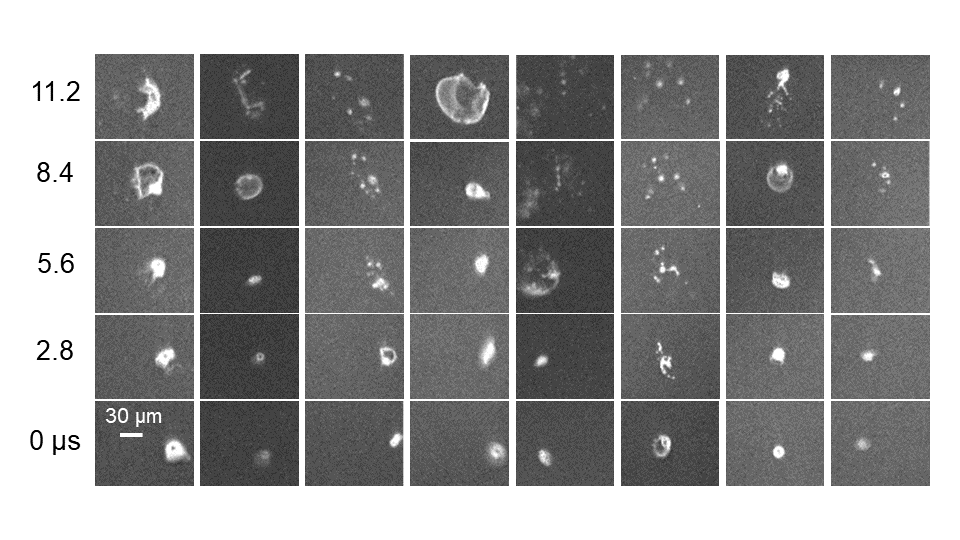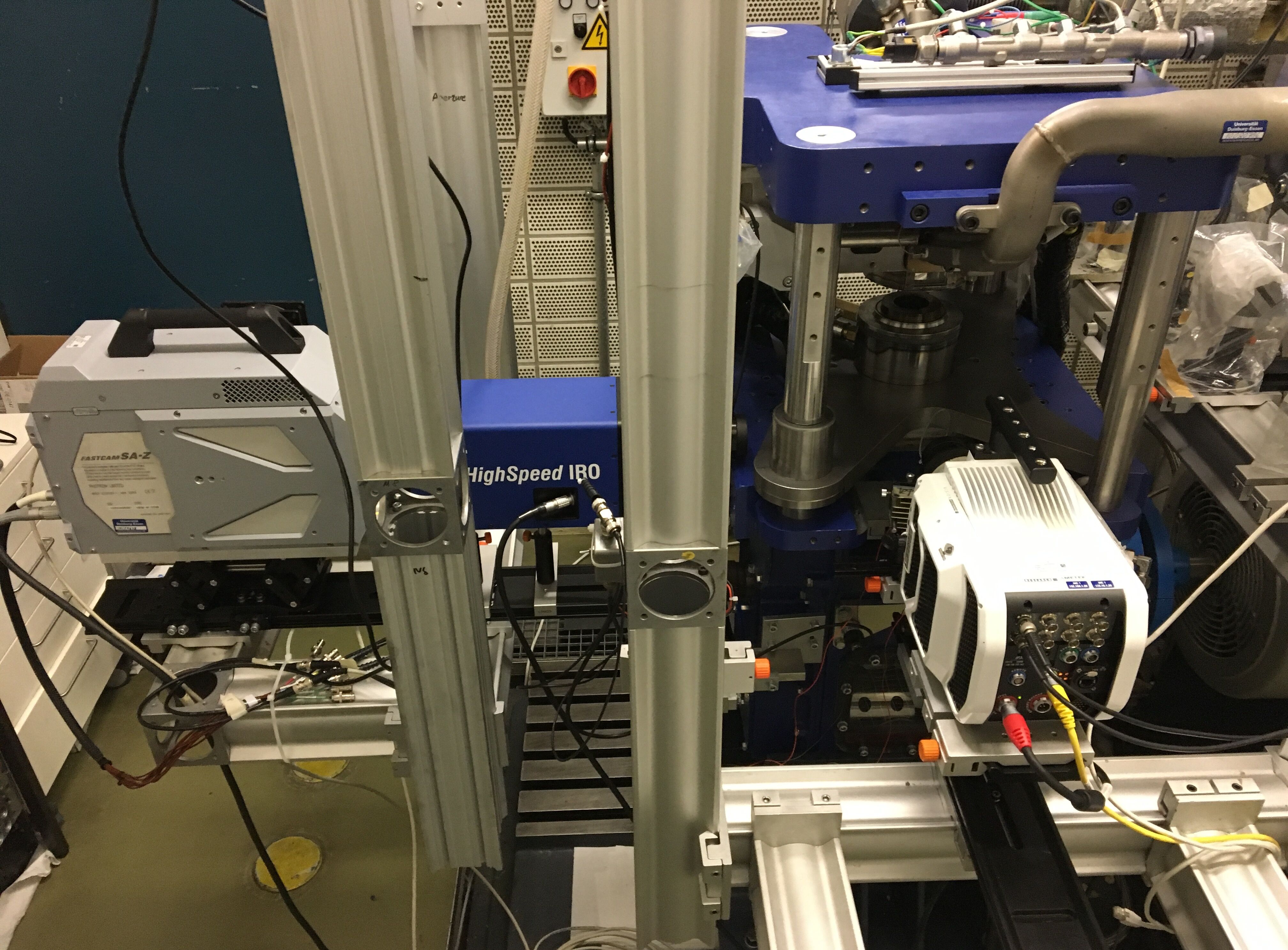Fast, sensitive, quantitative: scientific cameras
The EMPI-RF uses various cameras for optically acquiring two-dimensional data. Some scientific cameras are not very different in their sensor architecture from the cameras in our phones – in fact, the development of scientific cameras has benefited from the much larger markets of phones and machine vision. Other cameras are highly specialized and are only useful in very specific laboratory context. Typically, we want a camera to be particularly good in one or more ’disciplines’.
Fast
Many of the physical-chemical processes in energy conversion and materials synthesis happen fast or have a stochastic component, like turbulence. Because of this, we have cameras with high frame rates (currently, up to 20 000 frames per second at 1 MP resolution). Others can only take a few images per second, but with very short exposure times (a few nanoseconds). So-called ‘streak cameras‘ can scan a line through the field of view with an exposure time of less than a nanosecond per line – these cameras are typically used to acquire spectral information at extremely high rates.
Sensitive
Often, the measurement must work with very little light, or the light is not in the visible part of the spectrum. Very low light levels can be imaged with cameras that have an optical amplifier in front of the sensor, a so-called ’image intensifier‘. We also have cameras that are sensitive for ultraviolet (UV) or infrared (IR) light. For example, laser-induced fluorescence of gases is often in the UV, while absorption imaging of water films relies on infrared light. Most scientific cameras are ’color blind‘, that is, they cannot distinguish between different wavelengths. That is often not necessary, because the color is determined by other parts of the experiment, for example, by the wavelength of the laser that is used. However, we also have a color high-speed camera and a multi-spectral camera that can detect nine colors at the same time.
Quantitative
If we want to quantify some process variable, for example temperature, by optical imaging, we need to quantify the amount of light reaching each pixel in the underlying raw image. In principle, all ’digital‘ cameras are quantitative, also the ones in your phone. They count the number of photons converted to electrons on the sensor. However, in scientific cameras and the software that is used to operate them, particular efforts are made to make that number more accurate and precise. For example, several of our cameras have sensors that are cooled to sub-freezing temperatures to lower the noise that inevitably is incurred in transferring the data from the sensor. Image processing then needs to preserve the quantitative character of the measurement. This is a central part of obtaining physical information via imaging. We use both standard tools like MATLAB and more specialized software that integrates data acquisition, display, and processing.

’Micro-explosion‘ of droplets is an important process in the gas-phase synthesis of nanopowders via spraying of precursors. This is a very fast process in which the tiny droplets in the spray suddenly ’burst‘ – shown here are eight example sequences (vertical columns) acquired with over 300 000 frames per second.
 Two high-speed cameras simultaneously looking into the combustion chamber of an optically accessible engine with about 70 000 frames per second. On the left, an intensified camera images ignition and the flame, on the right a color camera sees injection, combustion, and in particular soot formation.
Two high-speed cameras simultaneously looking into the combustion chamber of an optically accessible engine with about 70 000 frames per second. On the left, an intensified camera images ignition and the flame, on the right a color camera sees injection, combustion, and in particular soot formation.

